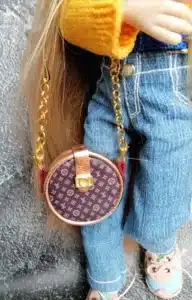Choosing the Best Hand Sewing Needle for Your Project
Here are the TOP – 3 of the best needles for hand sewing I tried. I hope it will be helpful for you.

Hand sewing is a popular craft combining art and utility. It’s a great way to personalize your clothing, repair it, or add custom touches to furniture and home decor. But before you start hand sewing, you should pick out the correct type of needle for your project. Let’s go over the different types of needles available so that you can choose the best one for your project!
Sewing Needle Types
The most common types of hand-sewing needles are sharps. These needles have a sharp point and are used for general-purpose tasks such as piecing together fabric or repairing clothing. They come in different sizes, ranging from very fine to thick. The finer the size, the more delicate and intricate your stitches will be — this makes them great for embroidery projects!
Beading needles are another type of hand-sewing needle that is specifically designed for stringing beads onto thread or yarn. These needles have an extra long eye, so they can easily slip through tiny bead holes without getting stuck or tangled up in the thread. They also have a pointed tip that helps them pierce through thicker materials like leather or felt with ease.
Tapestry needles are slightly curved at their tips and have large eyes, perfect for weaving in threads on canvas or other thick fabrics. This makes them ideal for projects like cross-stitching, where multiple strands of thread need to be woven together neatly and securely.
Finally, chenille needles are unique because they have a big eye and a sharp point that can penetrate heavy fabrics like denim or upholstery without fraying or damaging the material. These are great if you want to do heavy-duty repairs on furniture or clothing made from thicker fabrics.
The best needle for hand sewing for various fabrics
Different fabrics require needles that are tailored to their unique properties – heavier fabrics, such as canvas, need a needle made of robust material. In contrast, finer materials need a delicate hand to ensure smooth stitching without snagging. In general, the thicker the fabric, the larger and sturdier the needle needs to be; thicker needles can also be beneficial for other purposes too. Even if you are uncertain of the material, a universal or multipurpose needle is suitable to have on hand – an all-rounder solution that does not disappoint!
How to use a needle correctly
First, you should always ensure that your needle is sharp and light. Dull needles can cause damage to fabrics instead of allowing them to pass through the material smoothly. You should also make sure that your work area is well-lit so that you can see exactly what type of stitch or pattern each thread creates. Additionally, learn how to thread the eye of the needle quickly before starting to use it. After each stitch, make sure you do not pull your fabric too tightly, as this may damage its fibers. Lastly, always store your hand-sewing needles away from children and pets for safety measures.
TOP - 3 of the best needles for hand sewing
I hope it will be helpful for you.
1. Sdezunx needle Set
Pcs: 83
Material of needle: stainless steel
Brand:
Sdezunx
Project Type: betweens, darners, sharps, embroidery, heavy fabrics projects (coats, carpet), leather
Needle threader: +

Price: $5.99
2. SINGER Assorted Hand Needles
Pcs: 25
Material of needle: nickel and steel
Brand:
Singer
Project Type: betweens, darners, sharps, embroidery needles
Needle threader: –

Price: $5.06
3. 30 Pack Premium Hand Sewing Needles
Pcs: 30
Material of needle:
stainless steel
Brand:
Jekiinova
Project Type: tents, canvas, clothes, carpets, crafts, coats, mattresses, mending, embroidery, furs, leather.
Needle threader: +

Price: $5.99
The benefits of hand sewing for doll clothes
Hand sewing is the perfect way to show your creativity when it comes to making doll clothes. You can easily sew custom outfits for any doll using only a few best needles and some fabric. The best part about hand-sewing doll clothes is that you don’t need fancy or expensive materials to start. Every project can be done without breaking the bank. Hand sewing also lets you take your time and ensure each stitch is perfect.
Conclusion
Choosing the correct type of needle is essential for any hand-sewing project, whether it’s quilting, embroidery, beading, tapestry work, mending clothes, or more. Make sure you are picking out the best needle for your next project. Get start on creating something beautiful with confidence! Happy Sewing!

